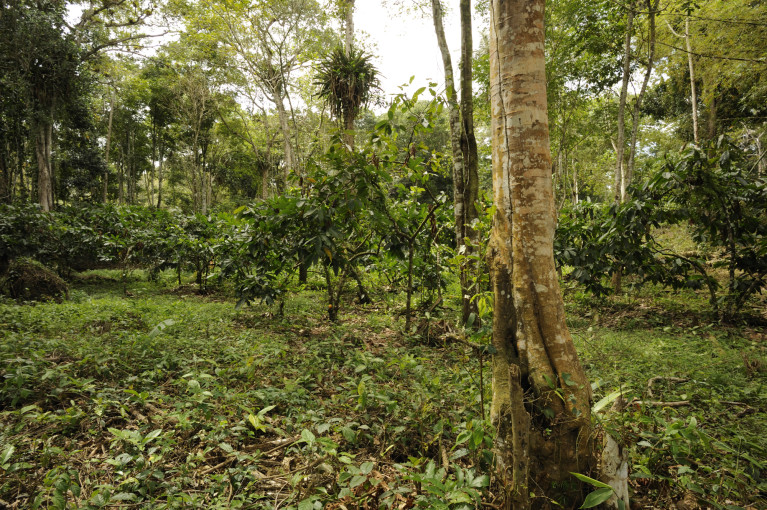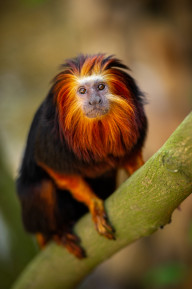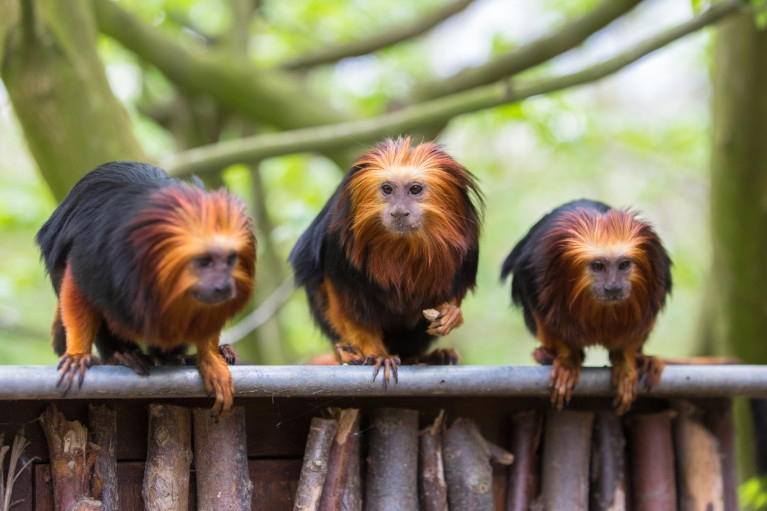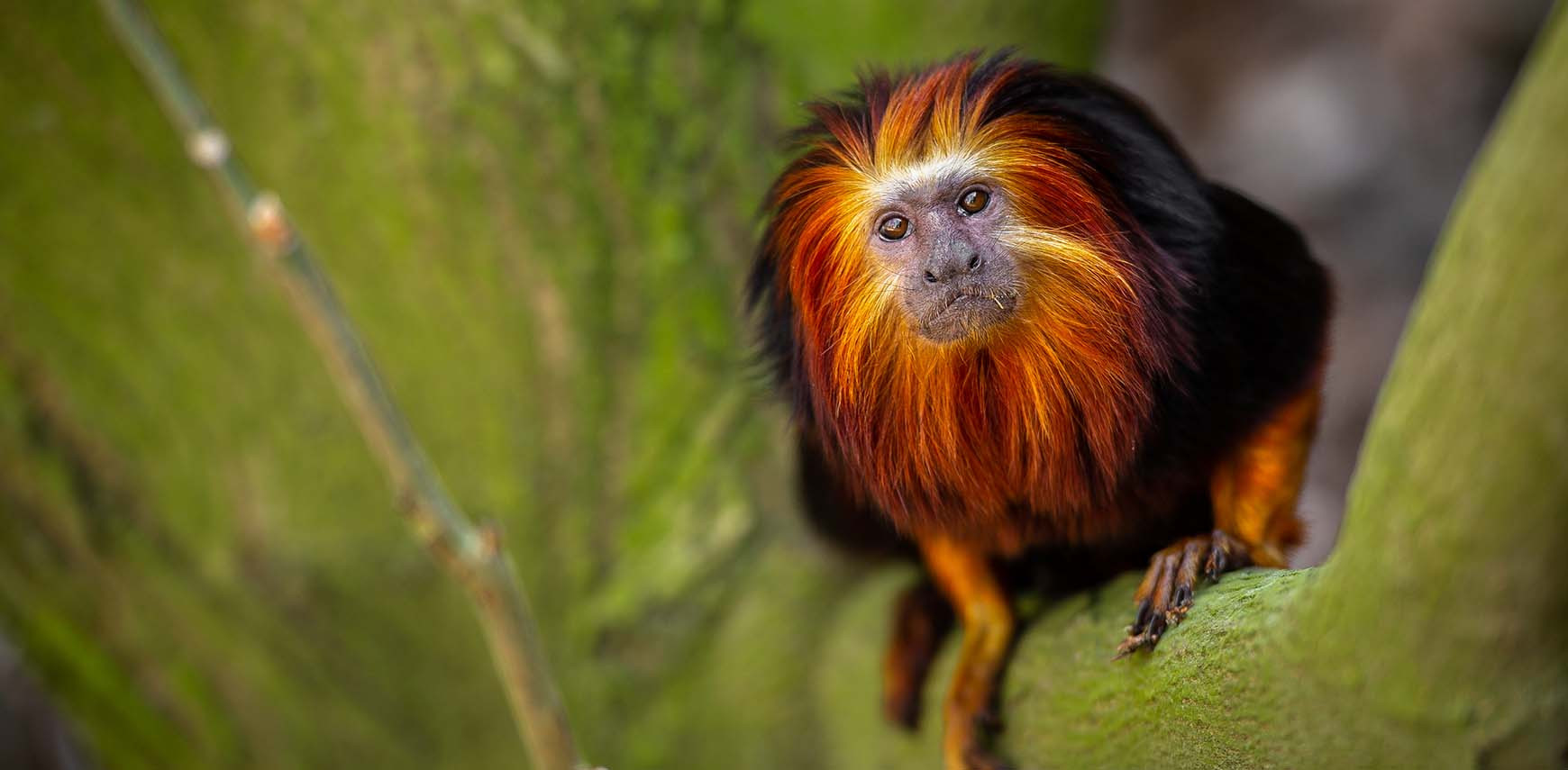How chocolate can save the golden-headed lion tamarins
"Chocolate can certainly help save the golden-headed lion tamarins." We know this after 20 years of research into the callitrichid monkey species in Bahia, Brazil. “That is the case when the cocoa, from which the chocolate is made, comes from a cabruca. In this type of cocoa plantation, the farmers grow the raw material of chocolate in such a way, that the forest trees in which the golden-headed lion tamarins live, can continue to exist. An ideal compromise between biodiversity conservation and economic profitability”, says Kristel De Vleeschouwer, who has been coordinating the BioBrasil research and conservation project for twenty years.
USEFUL COMPROMISE
Agroforestry. That is the name of the production system which the BioBrasil project endorses. “Farmers that are engaged in agroforestry will combine economic species such as cocoa, rubber and other fruit trees with forest trees. In this way, some of the original trees are protected from forest clearing, so that, for example, golden-headed lion tamarins find their way back to the original forests," explains the scientist. This is necessary, because the golden-headed lion tamarins are endangered. “We estimate that there are still a maximum of 15,000 animals left in nature. That number makes us hopeful for the survival of a viable population, provided we can protect their habitat, of course.”
Chocolate and cabrucas are not the ideal or only solution, but a compromise for the golden-headed lion tamarins. “The ideal habitat for this callitrichid monkey species is the Atlantic coastal forest in Brazil, because its original habitat consists of stable forests. The high forest trees provide the animals with fruit, they provide them with places to sleep and they provide shelter from predators”, explains Steffi Dekegel, PhD student at the University of Louvain-la-Neuve. But the forest in Brazil is having a hard time. “The forests are often unprotected or on private property. There are environmental laws that prohibit forest clearing, but they are hardly enforced. Due to forest clearing, large parts of the forests disappear and only minor forest fragments remain. This results in golden-headed lion tamarin populations becoming isolated, as they remain in the familiar environment of the limited patch of forest that remains. That seems safe, but it creates new problems. Due to the lack of genetic diversity, the population could eventually become extinct.”

To avoid that isolation, cocoa plantations can provide a rescue in need. “Cabrucas play an important role in increasing the connectivity of the landscape. Between the forest fragments of the original forest they can, as it were, form a bridge for the golden-headed lion tamarin. After all, cabrucas are also a useful habitat for the callitrichid monkey species, as the tall forest trees they need, can continue to exist to provide shade for the cocoa trees. Only the undergrowth of the vegetation must make way for cocoa cultivation," says Dekegel.
"We hope for the survival of a viable population, but then we have to be able to protect their habitat, of course.” - Project coordinator Kristel De Vleeschouwer
For her PhD study, Steffi Dekegel will travel to Brazil at the beginning of March 2022 to look for the intersection between the ideal number of shade trees for both the ecology and the economy. After all, the situation is complex. “The more shade trees, the better for the golden-headed lion tamarins, that's for sure. But it has not yet been determined how many shade trees can remain to keep traditional cocoa cultivation profitable enough for local farmers. After all, there is a danger that farmers will use their cabruca more intensively for a higher turnover, and that there will therefore be too few tall trees for the gold-headed lion tamarins. Or, they may opt for faster and bigger profits with a monoculture such as a coffee plantation in which not a single forest tree remains. We naturally want to prevent that by focusing on promoting the economic sustainability of cocoa forestry in the Bahia region.”

With this research, the Centre for Research & Conservation (CRC), the scientific institute of the Royal Zoological Society of Antwerp, will once again make a special contribution to the academic world. “Scientific research on the cocoa sector has so far focused on other regions such as West Africa and Asia. Other crops such as coffee have also been extensively examined. Until now, there has been very little interdisciplinary research into the cocoa industry in Brazil, so with this research we are making a valuable contribution,” explains Dekegel. Of course, there is also a lot of demand for this from Belgium, because chocolate is the most famous Belgian export product. The chocolate sector is therefore striving for more sustainable chocolate and cocoa production.
THE PERFECT POSITION
Twenty years after the start of the BioBrasil project, the team has reached a special milestone, because the two decades of extensive research and information gathering have now led to concrete conservation actions. “From the very beginning in 2002, the BioBrasil team has been conducting scientific studies looking at the effects of the fragmentation in the habitat of the golden-headed lion tamarins on their genetics, their behaviour, the ecology and the available food supply. The original plan was that we would start this project for three years, but it took considerably longer," laughs De Vleeschouwer.
"Thanks to 20 years of scientific research and networking with partners, we can conduct very targeted conservation actions with a high degree of efficiency.” – Project coordinator Kristel De Vleeschouwer
Thanks to its two decades of presence and experience, BioBrasil is now in a perfect position to provide a wealth of evidence-based conservation planning and provide the necessary knowledge to local projects, considering the needs of the population and their perception of golden-headed lion tamarins. “We are the longest-running project in the region. This makes our network very strong and allows us to ensure an interdisciplinary approach. From that network, the Bahian Lion Tamarin Conservation Initiative (BaLTCI) has now been established, coordinated by the CRC together with the Brazilian NGO Bicho do Mato, with BioBrasil as an important partner. For example, we can now start workshops on agroforestry in a well-founded way, set up educational programs on environmental awareness and explain the negative consequences of forest clearing on nature. That’s not all: we can show the farmers that they can do something for nature themselves and that they can even benefit from it. We support them as they help the golden-headed lion tamarin. For example, chocolate Sul de Bahia is linked to the BioBrasil project. We support this chocolate because it encourages farmers to keep forest trees where they are. We promote the sale of the product and work with farmers to help them meet the requirements to obtain the certificate. In this way, our support makes their cocoa plantation more economically viable. In order to maintain this cooperation, these farmers are endorsing the agroforestry project and they leave the forest trees alone as much as possible. That is good for the golden-headed lion tamarins, which also supports our conservation mission. I am very proud that we have been able to complete that cycle.”
The goal for the future is clear: the BioBrasil project aims to maintain viable and sustainable populations of golden-headed lion tamarins in their natural habitat, supported by a network of local partners and stakeholders, united in the BaLTCI network. The team strives to ensure that the area is managed in a way that contributes to sustainable development for people and nature. In this way, the BioBrasil project creates a win-win-win-win situation: for golden-headed lion tamarins, for the local farmers, for the chocolate and for you.

The Centre for Research & Conservation (CRC) already has an extensive history with the golden-headed lion tamarin. ZOO Antwerp has had this callitrichid monkey species in its animal collection since 1978 and has studied the animals. The CRC also plays an important role in the international breeding programme for the species in zoos. Since 2002 they also conduct research in nature in the BioBrasil project to contribute to conservation actions for the population in nature. In this way, the CRC contributes in all areas to the protection of the golden-headed lion tamarins.

